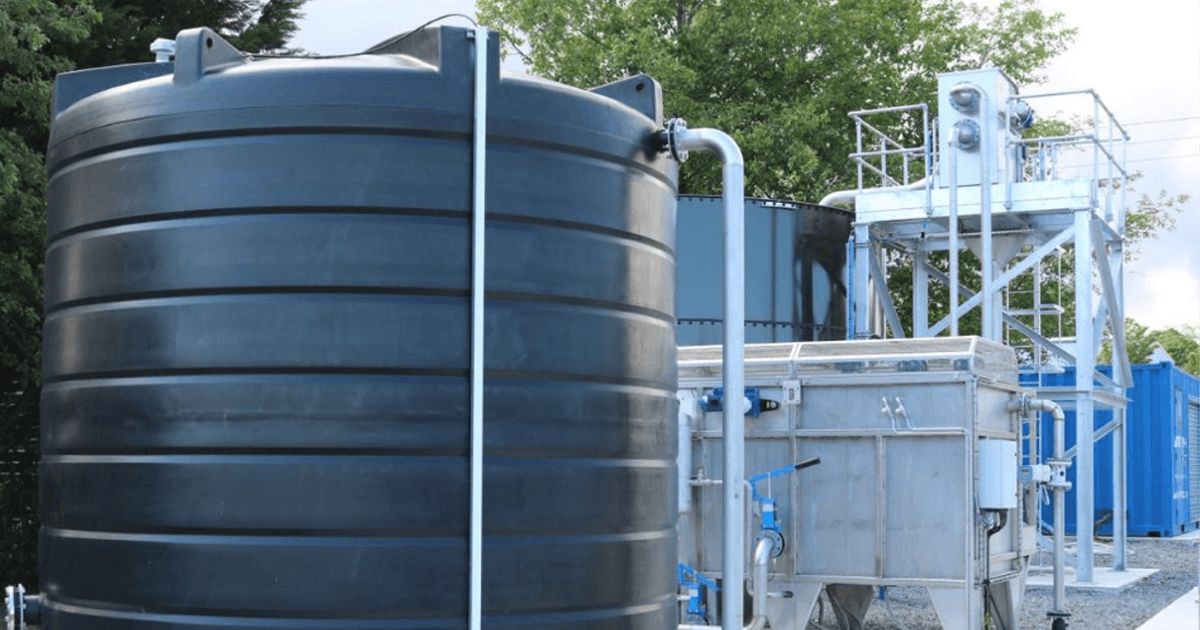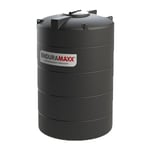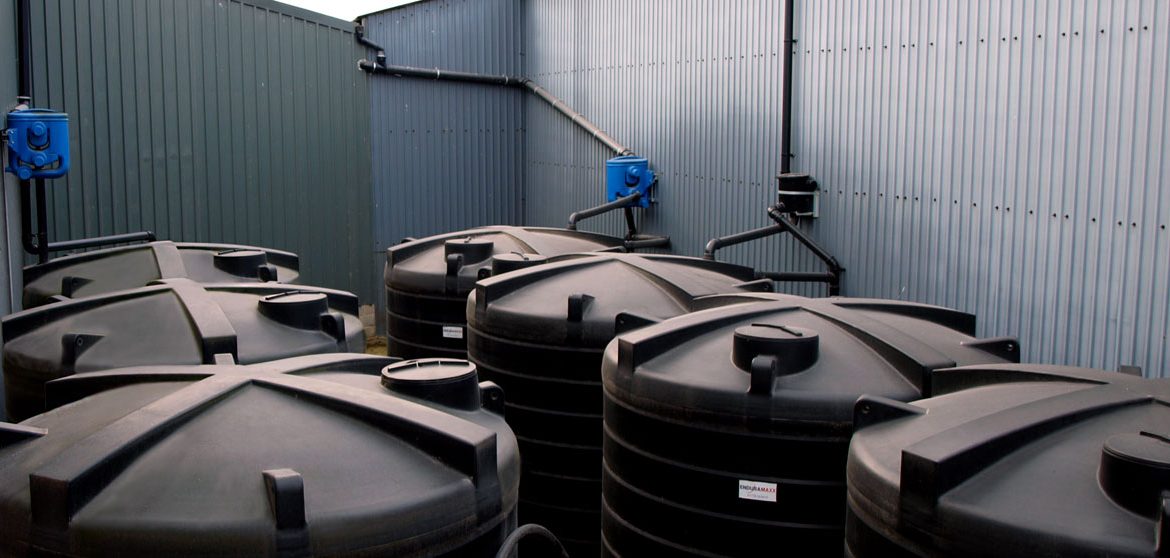HOW MUCH DO YOU REALLY KNOW ABOUT TANK MAINTENANCE?
The Ultimate Guide To Maintaining Your Tanks For Compliance, Safety & Efficiency
Water tanks are an essential component of industrial, agricultural, manufacturing, and domestic water treatment and storage systems. Whether the tank is a tiny 150L portable, a formidable 25,000L CAT5, or somewhere in-between, thorough cleaning and maintenance is essential for ensuring that the water quality meets every required safety standard.
This guide is written for anyone with responsibilities for industrial or agricultural water storage, including rainwater harvesting systems. Enduramaxx is one of the UK’s leading suppliers of durable tanks, storage, distribution, and filtration systems for a wide range of applications, with ISO 9001, UKAS, and DWI accreditations.
Although we specialise primarily in bespoke UV stabilised MDPE polyethene solutions, the guide also contains advice regarding the safe maintenance of concrete and GRP tanks. Included are approved tank cleaning instructions, as well as links to the relevant legislation.

WHY DOES TANK MAINTENANCE AND CLEANING MATTER?
All water tanks, whether for drinking water, process water, waste, or rainwater, require regular cleaning. A proactive approach is one of the most important ways of keeping water safe and ensuring efficiency whilst avoiding unexpected costs. There are many reasons why tank maintenance should never be neglected:
1) Stagnant water is a health hazard
Bacteria thrives in stagnant water, which the World Health Organisation claims contributes to over 500,000 deaths annually around the world. The catalogue of unpleasant illnesses related to unclean water includes botulism, campylobacteriosis, cholera, dysentery, E. coli, and Legionnaire’s disease, all of which can thrive in biofilms. Consuming water is not necessary for contracting a water-borne illness. For instance, the deadly Legionnaire’s disease pathogen breeds in water but is transmitted by inhalation when stagnant water is disturbed. As such, even wastewater tanks pose a potential hazard.
2) Tanks collect decaying plant and animal life
Even the most secure tanks sometimes attract unwanted visitors. Insects, small animals, and leaves decay in stagnant water to release billions of pathogens that collect and breed, creating a tempting buffet for a range of toxic algae. If left unchecked, water tanks can become a vibrant yet deadly microcosm of life. Aside from posing an obvious health hazard, this can also lead to damage to tank linings, seals, and pipework, resulting in increased maintenance costs.
3) Mains water contamination
Even the cleanest and most highly maintained water tanks remain vulnerable to contamination from mains water systems. Mains water is treated to a high standard but poorly maintained main pipework can act as a superhighway for microbes, spores, and sediment, all of which can undermine the most rigorous cleaning routines. As such, a regular cleaning schedule is recommended regardless of the quality of the water tank system.
4) It may be a legal requirement
Depending on the purpose of the tank, it may be subject to legislation concerning its maintenance requirements. The Health and Safety Executive (HSE) explains that maintenance and monitoring are crucial in the mandatory control of Legionella, and to this is added a lengthy portfolio of legislative documentation and guidance, including:
- Health & Safety at Work Act
- Control of Substances Hazardous to Health Regulations
- The Water Supply (Water Quality) Regulations
- Water Bylaws and Regulations
- Building Act 1984
- ACOP L8 The Control of Legionella Bacteria in Water Systems
- HSG 274 The Control of Legionella Bacteria in Hot and Cold Water Systems
- BS 8680: 2020 Water Quality - Water Safety Plans - Code of Practice
- BS 8558: 2015
- BS EN 806
If you are in doubt about which legislation applies to your system and location, the most efficient solution is to ask the experts at Enduramaxx.
5) Improve efficiency and reduce costs
Tank maintenance is not only about removing harmful bacteria and debris. Clean tanks are always more efficient and have much lower maintenance costs, especially as dirty water clogs pumps and leads to a chain-reaction of damage. In some cases, a lack of maintenance can demand the replacement of the unit, the pipework, or both, resulting in unnecessary costs. On the other hand, efficient tanks require less energy and waste less water, ensuring that the maintenance investment pays for itself.

HOW DO I KNOW IF MY TANK NEEDS CLEANING?
The frequency with which tanks need cleaning depends on several factors, such as the type of tank, the application, the construction material, and the intensity of use. However, it is generally recommended that tanks should be routinely cleaned three times a year and deep cleaned every two years. As sunlight is a powerful fuel for algae blooms and bacterial growth, any tank with exposure to direct sunlight needs to be checked and cleaned at least three times a year.
To establish the right cleaning schedule for your tank, it is important to carry out regular visual inspections of the interior. When inspecting the tank, look for signs of sediment, debris, sludge, slime, and microbial or algae growth. If any of these are identified, or you notice a musty or stagnant odour, the tank requires cleaning. If you have opted for a black or dark green tank, both of which are ideal for reducing the risk of algae, a powerful ‘white light’ torch or flashlight should be used during the inspection process, as the colour of the tank can camouflage some types of contamination. Additionally, microbiological testing kits and pH testing can help establish the quality of the water and alert maintenance personnel to the presence of harmful bacteria.
Exceptions
There are a few occasions where tanks must be urgently cleaned before they can be used again. Any installation or repair of parts such as supply lines should be followed by a routine clean, whilst tanks that have not been used for two or more months need to be drained and disinfected. The latter is important because Legionella accumulates in sealed, stagnant water, and is released in a dangerous airborne cloud as soon as the water is disturbed. Finally, if any coliform bacteria (e.g. E.coli) tests register as positive, the entire system needs to be sanitised.
HOW CAN I CLEAN MY TANK?
A basic cleaning schedule can go a long way towards ensuring tank safety and efficiency. The precise method depends on variables such as whether or not the tank has special coatings to reduce bacterial risk, and whether corrosion is present. However, the following is a helpful guide:
1) Drain the tank. An online calculator can help to predict the time it takes to empty.
2) Using a hard-bristled brush, scrub the insides thoroughly with detergent and hot water, paying particular attention to the connecting seals and other areas where debris, slime, and sludge may gather. Any detergent, such as washing-up liquid or laundry detergent, is suitable, although specialist cleaning detergents are also available.
3) Use a high-pressure water jet to remove the debris.
4) Apply more detergent and leave to sit for a minimum of two hours.
5) Rinse with clean water until it runs clear.
6) Disinfect the surfaces with a bleach solution or anti-bacterial spray.
7) Drain the tank.
8) Fill the tank with freshwater, and flush through to remove the cleaning solution residue.
9) Replace the lid and allow it to dry.
When this simple cleaning routine is carried out regularly, it should prevent sanitary emergencies and unexpected downtime. During the cleaning process, take note of the type of sediment or algae that are being removed, as this may enable adjustments to be made to reduce recurrence. For instance, if algae are found in the tank, it is likely that daylight exposure is affecting the water quality. Once identified, a simple step such as installing a blackout cover can reduce the risk of further blooms. Equally, if leaves are a regular problem, amendments can be made to improve the setup.
Filter
If the filter becomes clogged, it can compromise the efficiency of the system, increase energy costs, and reduce the service life of the equipment. As such, filters should be cleaned regularly, with a deep clean at least once every ten years. To keep the filter clean, use a hard-bristled brush to remove any slime, and apply a pressure washer or airline to flush away any remaining debris.

Pump
Sludge and slime can cause the pump to break down, which can be very expensive to fix. Additionally, the pump is a complex mechanism that becomes harder to clean as contaminants accumulate, so pumps should be cleaned frequently with a bi-annual deep clean to keep things running smoothly. To ensure that the pump is clean, check the suction filter, float switch, and hose, as well as any waterproof connectors. To clean, use a hard bristled brush and pressured washer, paying attention to any hard-to-reach areas.

Drinking water tanks
Contaminated drinking water poses a multitude of health risks, which is why inspection and cleaning are required under HSG274 and ACoP L8 guidelines. Professional inspections should be conducted at least once a year, and more frequently if the tank has experienced previous problems with bacteria or if it is left idle for more than two months. The risks of inspecting drinking water tanks can be high, so testing needs to be carried out by trained professionals with the correct experience and PPE equipment. As certification is required, the process needs to be photographed as evidence.

Control of water quality
There are many variables that can increase the risk of micro-aquatic bacterial outbreaks. One of the major risk factors is corrosion, which is prevalent in untreated steel water tanks. In industrial settings, corrosion is often accelerated by stray electrical currents, with tank deterioration encouraging a build-up of biofilm that feeds on the metal. Therefore, steel tanks should be treated with a solvent-free coating to reduce the risk. When corrosion is already present, tank maintenance and refurbishment procedures require the surfaces to be grit blasted to any bitumen, limpetite, or polyurethane residues prior to coating. After the application of a coating, tanks need to be thoroughly cleaned before they can be used.
Concrete and GRP water tanks
In older industrial buildings, especially large sites such as hospitals, concrete and GRP water tanks are prevalent. Concrete is particularly vulnerable to erosion and cracking, and its micro-pores allow easy access for bacteria. Portable GRP tanks are known for their invisible cavities and cracks, which can lead to the development of water osmotic blisters that easily burst, releasing a bloom of toxic material into the water. In both types of systems, cleaning needs to be carried out regularly and with particular care, as the use of pressure hoses can exacerbate existing damage. Coatings are available for concrete and GRP tanks, which are recommended. If your site operates either type of system, professional guidance regarding cleaning and maintenance is essential.
ENSURING THAT YOUR WATER TANK CLEANING IS SUCCESSFUL
Tank design has evolved considerably in recent years, and one of the primary focuses has been the improvement of water safety. Unless there is no other option, steel, concrete, and GRP tanks should be replaced with plastic/polymer alternatives. Even though it is much safer, cracked or degraded plastic can create a good environment for bacteria, so the quality of the plastic is highly influential. UV stabilised MDPE polyethene is a very successful material for discouraging bacteria and algae, with UV stabilisation reducing the risk of the tank deteriorating in sunlight. The smooth surfaces of bacterial-resistant polyethene are also easy to clean, reducing the time and effort required to keep the system healthy, ensuring a sound long-term investment.

Next steps - Get in touch!
Safe water storage equipment is crucial for health, safety, and efficiency. Thankfully, maintaining your water tanks correctly does not have to be a challenge, and material innovations are making the process even easier. To check whether your current cleaning schedule is ensuring water safety, or to learn more about our easy-to-maintain range of fluid management products, please get in touch today.

